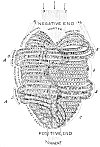Science and Occultism: Syllabus

Science Module numbers: 103, 303, 503 (units within courses)
Overview of the Science Modules I, II, III: The scientific method is a discipline to be integrated
into all tracks of the curriculum for the future
Schools of Meditation. What is the
"attitude of the Observer" if not an instance of the scientific method at
work? Is "subjectivity" always biased (as claimed by the orthodox scientific
method)? Is "scientism" another dogma? Is there an esoteric
scientific method?
The modules will sequentially address --from a scientific perspective-- the three major
categories of knowledge
as considered in the AAB-DK books. Although there are 886 instances of the word "science" in these
19 books (1508
for science, scientist or scientific), these will not be considered as the touchstone of truth, but rather as
maps to it. Once
the DK Teachings are shown to be in agreement with the accepted
principles of observation as practiced in science, then the DK maps
will be used to assist us in "observing, recognizing and revealing"
FACTS in uncharted territories. Master
D.K.'s first-hand, trustworthy testimony supports the reliability of the
proposed maps and brings us the opportunity to use them as hypotheses
to be tested through experiment and
experience.
We intend to approach DK's Teachings in a way similar to Einstein's work when he formulated the Special Theory of Relativity. That is, the corrected relativistic MODEL (map) did not invalidate Newtonian mechanics but confirmed and extended it. Or, in DK's words:"The fact of the day is seen later as part of a greater fact."
SM 103: Science and Occultism I (Introduction)
[...] credits
Spring 2009
Faculty: JB, [...], [...].
Prerequisites:
1. Analytical, reading and writing skills at the undergraduate (university) level.
2. Mastery of general scientific facts (e.g., physics, chemistry, biology,
astronomy) at the undergraduate (university) level.
3. [Suggestions on how prospective students might refresh their skills if they feel uncertain about their readiness
(e.g, World Lecture Hall, Wikipedia)].
Corequisites: [occult meditation and service courses]
Module Overview:
General introduction to science and the scientific method. In
esotericism, "scientific recognitions" (of the truth) are not "Ray 5
stuff" to be dealt in scientifically technical ways by "Ray 5 minds." A
student (of any ray) must learn to observe him/herself and his/her
environment in an impersonal way, similar to what a scientist does in
the laboratory, in order to make progress in the Paths of
Discipleship and Initiation.
Main Learning Objectives:
1. To define the (exoteric) scientific method and conceptually relate it to the early stages of occult meditation
2. To recognize how the scientific method is used in ordinary life (individually and socially;
e.g. Journalism & Trained Observers))
3. To apply the scientific method to observe and recognize virtues and vices of the personality
Activities:
1. Group discussions of assigned texts
2. Individual interaction
(meetings) with faculty
3. Evening Reviews (on Light, Joy, Indifference,
Harmlessness, the Observer)
Core Texts:
1. DK
compilations on the
usefulness and limitations of the (orthodox/exoteric) scientific method.
Can the fact of the soul be proved?
2. DK compilation on Service as a scientific method
3. DK compilation on Maya
and Scientific Service
Additional readings:
1. Ken Wilber's validation criteria of subjective truth
2. Excerpts from Khun's The Copernican Revolution
3. JB's The Questing Scientist series
Supplementary materials:
1. IONS Journal
2. Milestones
of the scientific method in Physics (Astronomy), Chemistry
(Biochemistry), Biology, Human Anatomy & Physiology (Medicine),
Mathematics & Geometry, Sociology & Psychology.
3. Discovery of radioactivity (Courie)
Assignments:
1. Essay: Define the scientific method (including causality)
2. Essay: Define hypotheses, models, theories and laws
3. Weekly reports on textbook excerpts and compilations [short response papers
to be posted in the "Discussion Board" before class meetings]
Grading and evaluation: Based on knowledge and comprehension of the studied material (using Bloom's taxonomy of the cognitive domain)
Course policies:
[class attendance; turning in late work; missing homework, tests or
exams; make-ups; extra credit; requesting extensions; reporting
illnesses; plagiarism].
Course schedule: [Readings
by date]
